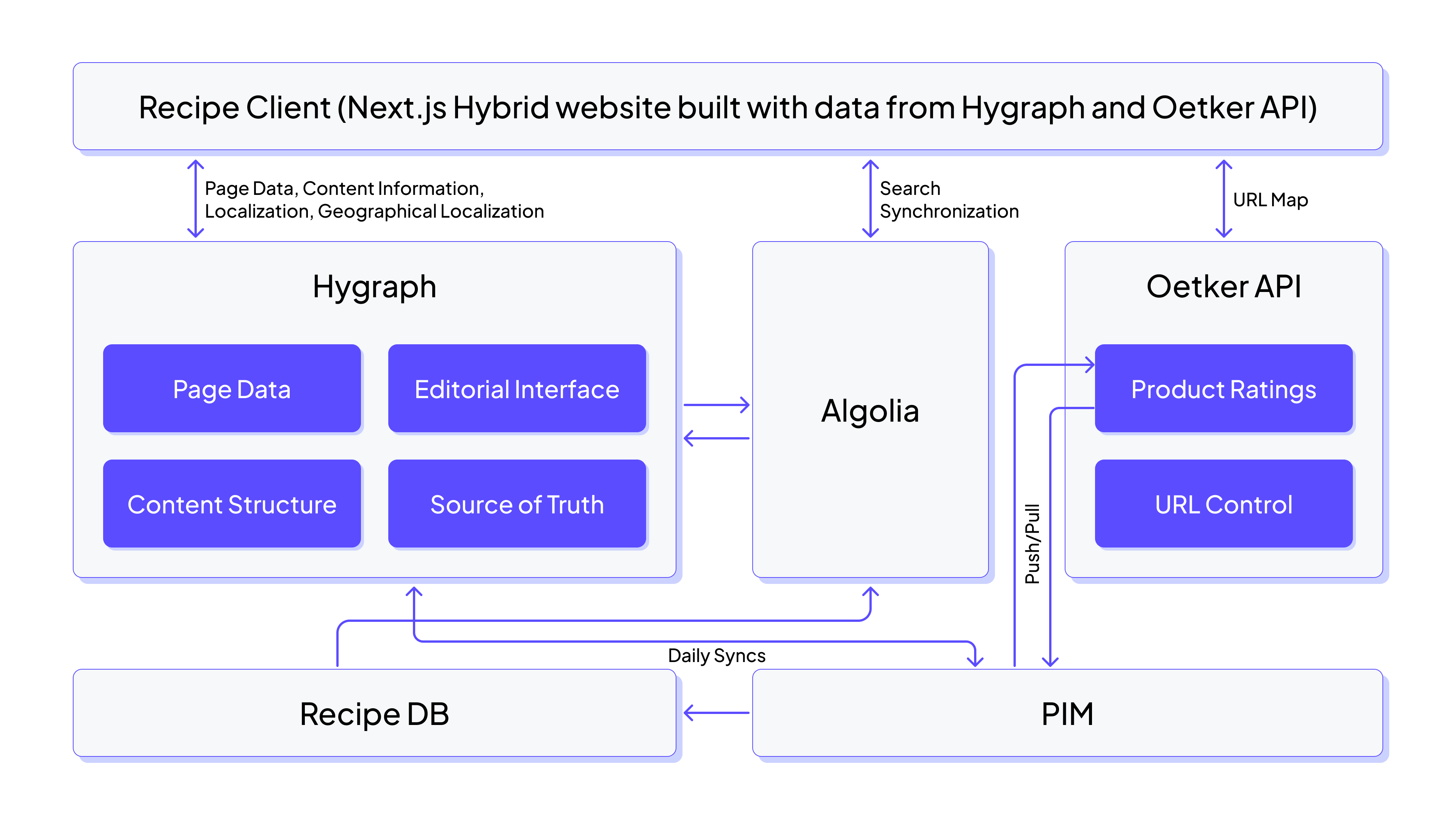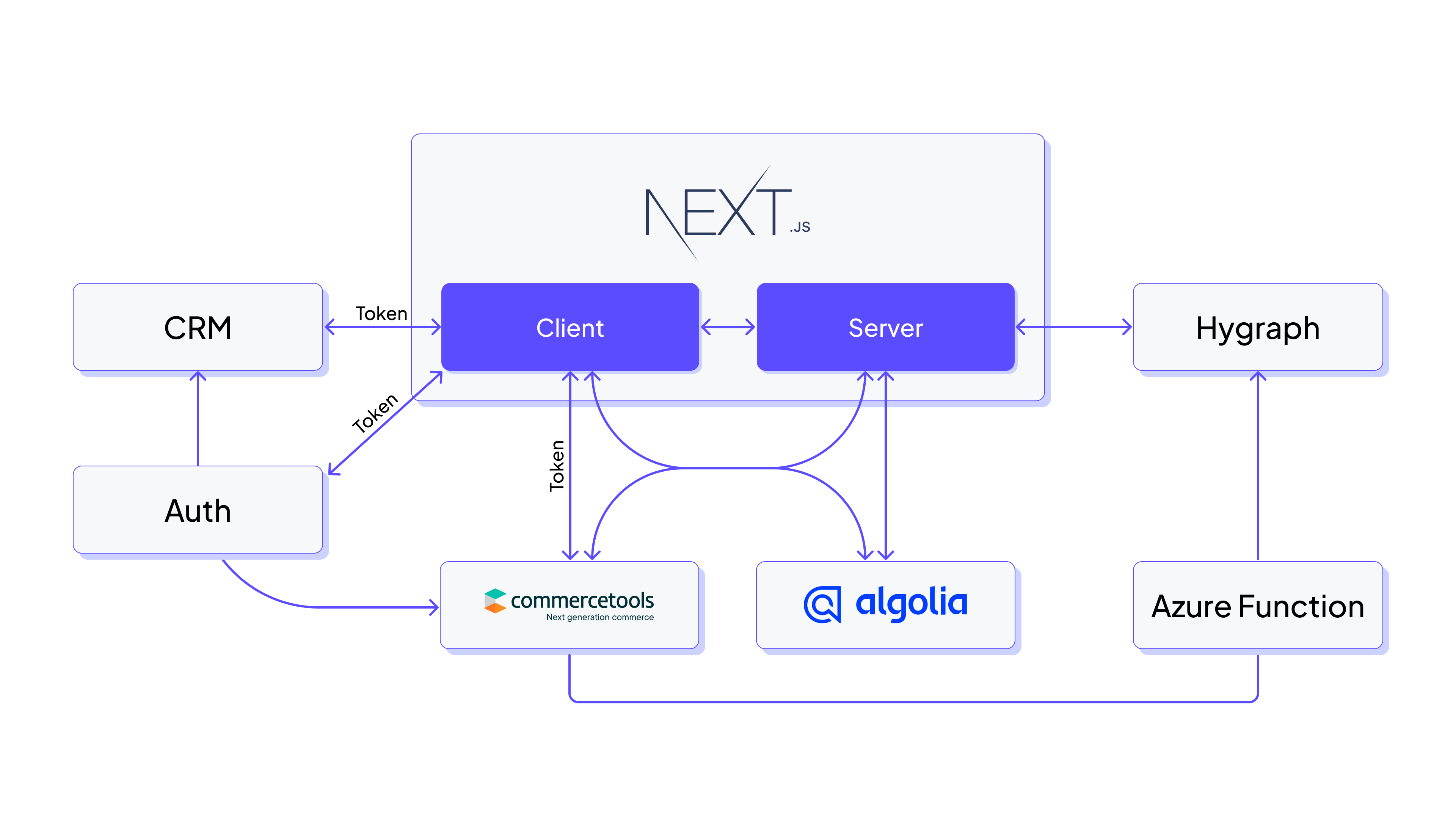What is composable commerce and how can your business benefit from it?
We will explain the term and look at real-world examples of composable commerce architectures.
Customer experiences now come with high expectations. In fact, over 84% of consumers consider a company’s customer experience just as important as its products. An average buying journey now involves customers interacting with brands through multiple channels.
Composable commerce allows brands to translate these high expectations into personalized digital experiences by leveraging the best-of-breed technologies that perfectly suit their business needs.
What is composable commerce?Anchor
Composable commerce is a modular digital commerce development approach based on composable architecture. The term was coined by Gartner in 2020 and it involves selecting the best possible commerce components and combining them together or ‘composting’ them into a custom application that perfectly aligns with your business needs.
Composable commerce makes it possible to choose the best-of-breed technologies to build a highly flexible and fully customized eCommerce tech stack.
Composable commerce can also be considered a more comprehensive and thorough approach to headless commerce. Both involve decoupling the frontend and backend infrastructure and then using APIs to facilitate communication between the two. This way, you don’t have to build the backend and frontend on the same framework or programming language.
But with composable commerce, APIs manage communication between frontend and backend while connecting different backend microservices.
Composable commerce leverages numerous modern approaches and technologies like MACH (Microservices, APIs, Cloud, and Headless) and JAM (JavaScript, APIs, and Markup). However, it goes beyond MACH by not tying you to monolithic applications.
PBCs, or Packaged Business Capabilities, are the building blocks of composable architecture. These interchangeable blocks allow you to completely customize your tech stack instead of restricting you to standardized features that may or may not fit your business needs.
What’s driving the demand for composable commerce?Anchor
In a composable age, monolithic eCommerce suites might not be the answer to consumers' needs for a personalized experience. Consumers today shop across multiple devices and channels all at the same time. For instance, a customer may find a pair of shoes they like in an online store but still drive to a brick-and-mortar store to try them on before purchasing.
As consumers find and buy products from different touchpoints, it has become more important than ever for brands to provide a seamless and cohesive omnichannel digital shopping experience no matter how consumers start or finish their buying journey.
Customers expect seamless omnichannel experiences, quick order fulfillment, faster response to their queries, and personalized product recommendations. In fact, omnichannel strategies can increase incremental store visits by over 80%.
This is precisely where composable commerce can help. With its best-of-breed commerce components, composable architectures can help brands embrace agile eCommerce and improve flexibility for introducing more effective omnichannel strategies.
Benefits of composable commerceAnchor
Composable commerce offers many benefits, including:
No vendor lock-inAnchor
With best-of-breed modular technology, you can get the option to select vendors which offer commerce solutions that perfectly fit your specific business needs. You can add, modify, or remove functionalities without vendor lock-in.
Faster deploymentAnchor
Composable commerce allows businesses to launch new digital experiences quickly. That is because whenever changes are needed, you don’t need to update the entire application or all components. You can quickly make changes to the backend without any frontend interference.
Scalability and flexibilityAnchor
Composable commerce makes it possible for you to scale automatically without performance or speed issues. The flexibility also allows developers to experiment with different features and touchpoints without any downtime. This, in turn, allows teams to innovate faster and reduce time-to-market.
Reduce TCO and operational costsAnchor
As legacy system maintenance becomes more expensive and your development team spends more time maintaining the system than innovating, your TCO (total cost of ownership) spikes. In a monolithic setup, you must purchase a whole system to expand some particular functionality, and version upgrades can break things on your application and lead to loss of business.
By contrast, a composable commerce system allows you to purchase only the components you need, and it makes it easier to maintain and upgrade your system. Moreover, it's also possible to significantly decrease the costs of monitoring, hosting, and innumerable customizations from your IT budget.
Deliver better digital experiencesAnchor
Composable commerce allows businesses deliver high-performance digital experiences and customize customer journeys in a faster and more targeted way. As a result of switching to a composable stack, Dr. Oetker was able to provide a sustainable infrastructure that facilitated data transfer between different consumer touch points, as well as connecting many useful microservices to the system via APIs. This eliminated existing barriers to logging into the recipe platform, identified value-added services, and extended relevant touch points to their customers which led to a 57% increase in longer session durations.
Composable commerce architecture examplesAnchor
The right architecture for composable commerce will depend a lot on your business needs and tech stacks. Here are some examples of a composable commerce architecture:
Architecture for unified catalog and product experienceAnchor
Dr. Oetker, a global leader in the Food and Beverage industry, partnered with AKQA to build a microservice-based composable architecture to modernize their digital operations and centralize infrastructure to manage brands across 40+ countries.
In this stack, Hygraph is the CMS, Algolia is the search API, Force.com is the Customer Data Platform, and Elasticsearch is used to pull recipes from the internal database and the Product Information Manager. Next.js is the front-end framework which enables hybrid static & server rendering and will support international roll-out to up to 40 markets with seamless and high performance.
Hygraph communicates with PIM to retrieve product information, and also uses its App Framework to integrate data from different sources. Editorial interface, page data, and content structure are all managed within Hygraph.
Architecture for personalized experiences to fly off the shelfAnchor
Vision Healthcare, a fast-growing consumer healthcare company based in Europe, unified its system stack and resolved the performance issues it was facing with Hygraph.
The composable stack now is powered by Next.js on the frontend, Hygraph as the headless CMS, Commercetools as the commerce system, Algolia as a headless search engine, and a custom built microservice order management system that integrates with email marketing tools, Amazon, Bol.com, and more.
Vision Healthcare uses Hygraph for the content side of the application landscape including product categories, blogs, content pages, and general website settings. If any of the components are outdated or there's a better component available, they can replace just that part instead of redoing the entire platform with the headless setup.
How to adopt composable commerceAnchor
Every brand has a unique journey to embrace composable commerce, which will be determined greatly by its current business challenges and end goals.
Nevertheless, there is always a first step to any journey. Composable tech stacks challenge you to work out several microservices and orchestrating several APIs into one consistent layer. If you're drawing a proof of concept for your composable commerce project, keep in mind the role orchestration plays in delivering a unified catalog and product experience.
Consider a headless CMS like Hygraph to create a truly resilient architecture without constricting your creativity or inflexible vendors. By building unique, blazing-fast eCommerce websites, applications, and sales channels, Hygraph helps you serve customers at every digital touchpoint. It is possible to use Hygraph as your PIM, integrating with your preferred fulfillment and payments solutions, or introducing Hygraph to unify your commerce stack with critical content, promotions, and remote fields, integrating with all of your APIs.
What’s nextAnchor
Composable commerce is expected to grow significantly in the coming years as more and more businesses ditch monolithic platforms to adopt best-of-breed technologies, improve digital experiences for customers, and lower IT costs.
Delight your customers with high-performant, personalized, and localized experiences with Hygraph powering your catalog, pages, translations, and promotions. Deliver personalized experiences at scale by aggregating logic from your CRM, automation platforms, marketing tools, and more.
Hygraph can enable your tech stack to grow with your business. Request a demo and see how Hygraph can help leverage composable components to deliver high-performance digital experiences.

